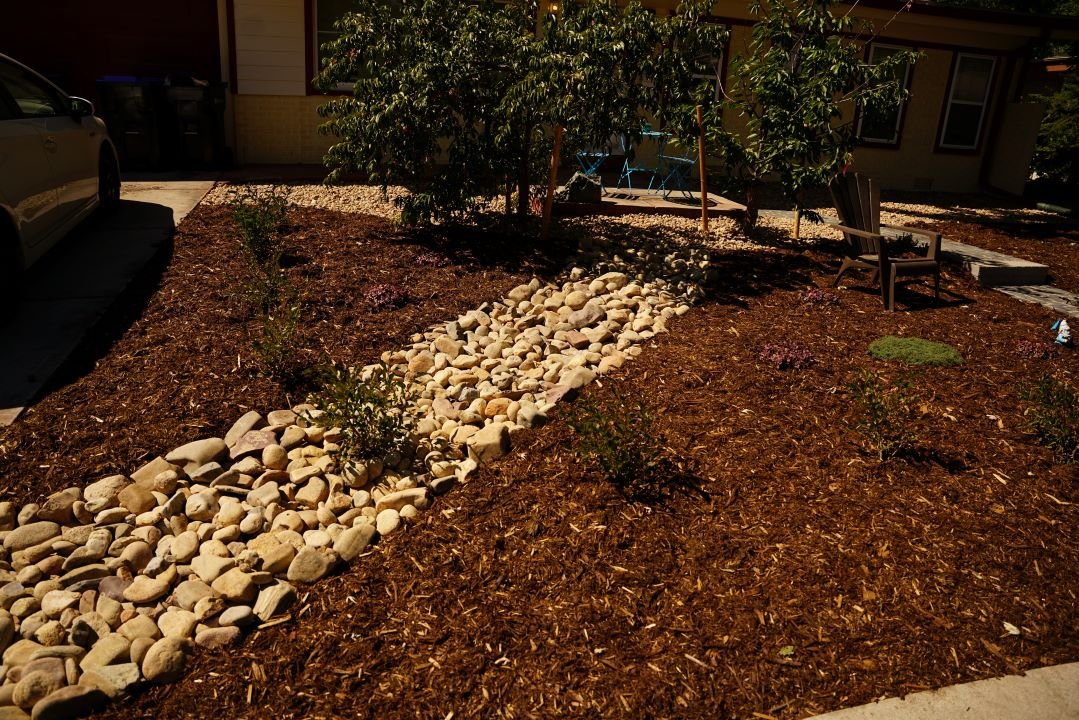The Impact of Proper Drainage on Landscape Health and Longevity
When we think of a thriving landscape, we often picture vibrant greenery, healthy trees, and seamless outdoor layouts. But underneath that beauty is a silent workhorse that often goes unnoticed: proper drainage. Without it, even the most carefully designed yard can suffer from waterlogging, root decay, and long-term structural issues. In regions with unpredictable weather and varied elevation, investing in good drainage is not optional: it’s essential.
This article explores why managing water runoff is a cornerstone of sustainable landscaping and how it directly affects the health, usability, and lifespan of your outdoor space. Whether you're designing from scratch or improving an existing layout, understanding the role of drainage can help you avoid common mistakes and make smarter, longer-lasting decisions.
Why Drainage Matters in Every Landscape
Every landscape, no matter how flat or sloped, deals with water movement. Rain, snowmelt, and irrigation all introduce moisture to your soil. Without a clear and controlled path for that water to follow, it collects where it shouldn’t, and that’s when damage begins.
Here’s why proper drainage plays a foundational role:
Prevents soil erosion: Without a drainage plan, fast-moving water can strip away topsoil, exposing roots and disrupting plant stability.
Protects plant health: Standing water suffocates roots, leading to rot and disease in trees, shrubs, and turf.
Keeps hardscapes intact: Patios, walkways, and retaining walls can crack or shift due to water buildup and freeze-thaw cycles.
Reduces mosquito breeding zones: Poor drainage creates ideal conditions for standing water, which invites mosquitoes and other pests.
Directs water away from structures: Overflow can damage home foundations, basements, and garage slabs if not channeled properly.
In short, drainage isn't just a plumbing concern, as it’s a core element of outdoor health and design.
Recognizing Drainage Issues Before They Escalate
You don’t need a storm to spot a drainage problem. Early signs often appear in subtle ways. Identifying them promptly can save your landscape from serious decline.
Watch for these red flags:
Pooling water on the lawn or around plant beds after light rain
Muddy footprints or soggy patches that never fully dry
Discoloration or mold on patios, fences, or retaining walls
Wilting plants in one area despite proper watering
Shifting gravel or mulch caused by uncontrolled runoff
Cracks in walkways near downspouts or sloped terrain
Certain features, like planter box irrigation, also need drainage adjustments to perform effectively. Without intervention, these signs tend to grow worse over time.
Smart Drainage Solutions for Lasting Results
Addressing landscape drainage involves more than just adding a French drain or trench. It should be integrated into the layout from the start and adapted to the topography, soil type, and plant needs.
Common landscape-friendly solutions include:
Grading and leveling: Adjusting slope so water flows away from structures and vulnerable plant zones
Dry creek beds: Aesthetic rock channels that help redirect runoff through the yard
French drains: Subsurface piping that collects and redirects groundwater
Rain gardens: Low areas planted with water-tolerant species to collect excess water
Catch basins and channel drains: Grates and trenches are designed to intercept surface water and prevent pooling
Downspout extensions: Simple add-ons that help move roof runoff far from foundations
When planning raised beds, remember that even these compact areas benefit from thoughtful design. If excess water collects in them, it can quickly damage roots and soil structure. For helpful insights on this topic, check out drainage for raised beds to ensure proper setup from the start.
Seasonal Drainage Challenges in Colorado Landscapes
In mountain climates like Colorado, the seasons present unique challenges. Spring snowmelt can lead to rapid runoff, while summer thunderstorms hit with intensity. Proper drainage needs to address all-season risks to truly protect your landscape.
Spring and summer risks include:
Snowmelt saturation: As the snow quickly thaws, yards with poor slope or compacted soil struggle to shed water.
Heavy downpours: Sudden rain overwhelms shallow basins or uncovered slopes, causing washouts.
Overwatering stress: Frequent sprinkler use can worsen already saturated soil if drainage is poor.
Drought-to-flood cycles: Landscapes built without water regulation suffer when extremes flip quickly.
Designing with these cycles in mind ensures your yard can withstand both dry spells and heavy rains without compromising its health.
Maintaining Drainage Systems Over Time
Even the best drainage setups need regular checks. Debris, sediment buildup, and root overgrowth can obstruct systems, reducing their effectiveness and exposing your landscape to preventable risks.
Routine maintenance tips:
Clear gutters and downspouts at least twice a year
Inspect French drains for sediment buildup or clogs
Refresh gravel or rock beds to maintain permeability
Prune overgrown roots that can shift or block drainage paths
Watch for new pooling areas after heavy rains and adjust grading if needed
Proactive maintenance extends the lifespan of your landscape investment and prevents costly damage down the line.
Create a Smarter, Water-Wise Landscape
Water can be a force for beauty or destruction; it all depends on how it's managed. By prioritizing drainage in your outdoor design, you protect everything from your lawn to your home’s foundation. Smart drainage doesn’t just prevent problems but also supports long-term landscape vitality, making your yard more resilient and enjoyable year after year.
Let Experts Handle the Heavy Waterwork
Designing drainage takes more than guesswork. For a custom solution that fits your terrain and aesthetic goals, reach out toHighlands Landscaping for expert help. Let your landscape thrive from the ground up.

